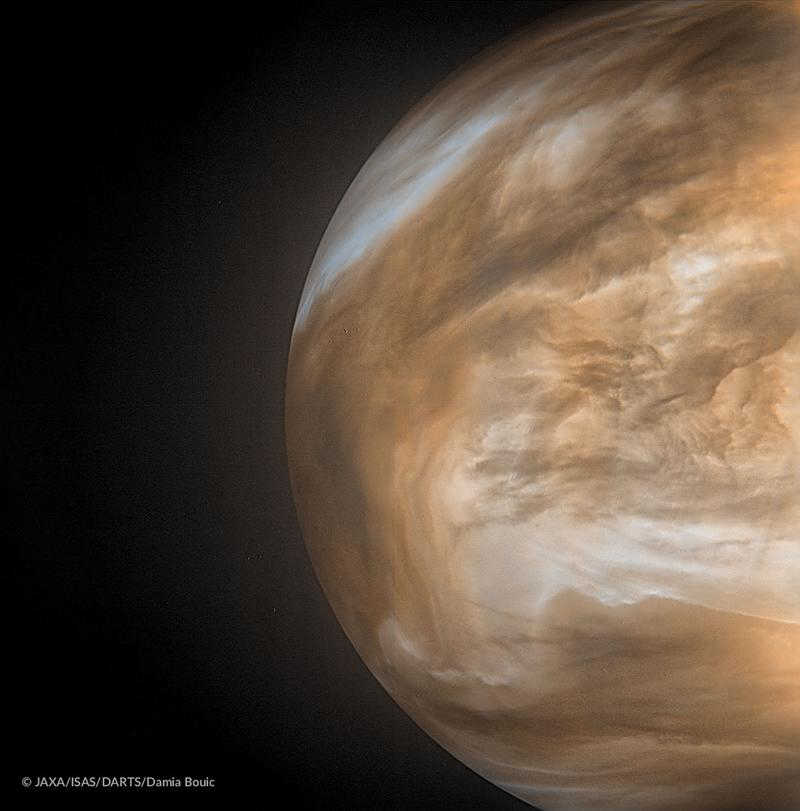Venus, the second planet in our solar system, possesses a terrestrial nature, similar to Earth, with its rocky composition and comparable size. However, it is a starkly contrasting world, more akin to a hellish landscape rather than our own. In the past, science fiction authors portrayed Venus as Earth’s twin, complete with flowing rivers, seas with pristine white beaches, and blue skies adorned with drifting clouds. Yet, we now understand that this depiction is far from accurate.


A stunning image of Venus taken by the Japanese spacecraft Akatsuki while orbiting the planet.
How different is Venus from Earth? Besides their similar size, these two planets have very little in common. Venus lacks any bodies of water, and instead has scorching temperatures and rivers of lava. With its intense atmospheric pressure and acid rain, Venus is a world unlike our own. It is a true hot hell, as many people envision it, but this uniqueness only adds to its intrigue.
Discovery History
Venus has not been discovered by any particular individual, as it has always been visible in the sky as a bright star, second only to the Sun and the Moon in terms of brightness. It required no effort to locate it, thus Venus has always been known. In fact, ancient Babylonian astronomers were even aware that it resembled a sickle shape, despite lacking any telescopes.
Many ancient civilizations, including the Mayans, made observations of this radiant star. Its rising and setting times were accurately calculated, and it was revered in various cultures. Venus holds a significant role in astrology and occultism.
However, it was Galileo Galilei who first observed Venus through a telescope in 1610, even documenting its different phases. This marked the beginning of scientific exploration of our neighboring planet.
Fascinating information about Venus
This celestial body is incredibly intriguing, showcasing numerous distinctions not only from our familiar planet Earth, but also from the other members of our solar system. It undeniably stands as a one-of-a-kind world with no comparable counterparts.
- Venus bears a remarkable resemblance to Earth when it comes to its physical characteristics. Its diameter is only 640 kilometers smaller than that of Earth, and its mass accounts for 80% of Earth’s.
- The duration of a Venusian year amounts to 225 Earth days, while a day on Venus lasts for 243 days, signifying that a Venusian day surpasses its year in length.
- Venus exhibits a unique rotation pattern, defying the norm of other planets, with the exception of Uranus, by spinning from east to west.
- Seasons do not exist on Venus.
- Venus is known as the hottest planet in our solar system. It surpasses even Mercury, which is closer to the Sun. The temperature on Venus can reach a scorching 467 degrees Celsius, exceeding the melting points of tin, lead, and zinc.
- Due to its thick cloud cover, the lighting on Venus is similar to a cloudy day on Earth. Despite the Sun’s proximity, it remains unseen from the planet’s surface.
- Although the surface of Venus is not visible due to the dense cloud layer, radio waves of a specific wavelength can penetrate through this cloud cover.
- The surface of Venus is sparsely dotted with craters, and those that do exist are at least 2 km wide. This is because only exceptionally large meteorites can break through the planet’s dense atmosphere, while smaller ones burn up upon entry.
- The atmospheric pressure on Venus’ surface is a staggering 90 times greater than that on Earth.
- Venus’ atmospheric weight is 93 times greater than that of Earth.
- Sulfuric acid precipitation occurs on Venus, although the droplets evaporate before reaching the surface.
- Venus is home to numerous volcanoes, with thousands of them present.
- The typical landscape of Venus consists of mountains and rocky deserts.
- Venus possesses an extremely weak magnetic field, almost non-existent.
- Neither Venus nor Mercury have any natural satellites, unlike the other planets.
- Venus lacks water in any form, making it the driest planet in existence. Additionally, the solar wind actively removes oxygen and hydrogen atoms from the atmosphere, preventing the formation of water molecules. Surprisingly, even Mercury contains ice.
Of course, these are just some of the remarkable features of this incredible planet.
Distinctive Features of Venus
Venus stands out as the third most brilliant entity in the sky, ranking just below the Sun and the Moon, and is the planet nearest to Earth. Due to its closer proximity to the Sun, Venus is always observable either during the evening or the morning. The maximum deviation from the Sun can reach up to 47.8 0. In the absence of moonlight, Venus can emit such a brilliant luminosity that it casts shadows on various objects and is mirrored in bodies of water. Its luminosity can achieve -4.7m.
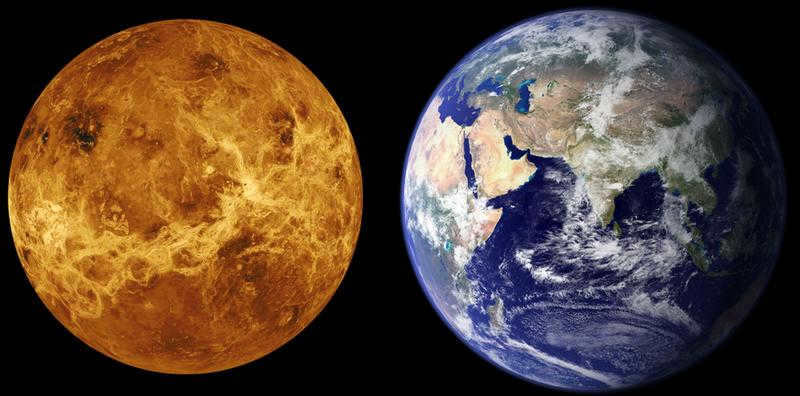
Venus and Earth have almost the same size.
Venus has a unique rotation compared to other planets. Its axis is tilted at 177 0 , causing it to rotate in a different direction. It takes Venus 243 Earth days to complete a revolution around its axis, while it takes 227 days for a full revolution around the Sun. This results in a light part of the day lasting for approximately 117 days.
The average distance from Venus to the Sun is about 0.7 astronomical units or 108 million kilometers, which is significantly less than the distance from Earth. In fact, our planets can come as close as 38 million kilometers in a year.
Venus bears a striking resemblance to Earth in terms of its physical characteristics. It shares a comparable size, composition, and orbits in close proximity to the Sun, yet maintains a safe distance. Were it not for the extreme conditions caused by the intense greenhouse effect, Venus could easily pass as our planet’s identical twin.
The Surface of Venus
Exploring the surface of Venus visually proves to be an arduous task due to the constant and dense layer of clouds that never seem to dissipate. As a result, scientists rely on radar methods, utilizing radio waves of specific wavelengths that can easily penetrate through the thick cloud cover.
Prior to the deployment of automated probes to Venus, scientists attempted to penetrate the Venusian clouds using ground-based radio telescopes. However, the resulting images were quite crude, capturing only the largest features spanning hundreds and thousands of kilometers.
Today, we have managed to create an almost comprehensive map of our neighboring planet, revealing numerous intricate details. Much of the mapping work was accomplished by the American probe “Magellan”, while the Soviet spacecrafts “Venera-15” and “Venera-16” also played a significant role during their visit in 1983-1984.
Based on the research findings, Venus has a relatively thin and fragile crust due to excessively high temperatures and dehydration. It is home to two continents, namely Aphrodite’s Land and Ishtar’s Land, each comparable in size to Europe. The planet features canyons and lowlands, with the Maxwell Mountains being its highest peaks, reaching a towering height of 11 kilometers.
Venus boasts a limited number of craters, with only around a hundred being present. Only the largest meteorites manage to penetrate its surface, and their occurrence is infrequent. Additionally, the upper layer of the crust is relatively young, estimated to be around 500 million years old. Not long ago, rivers and seas of lava from numerous volcanoes covered the surface. It is believed that volcanic activity is still ongoing, although no active volcanoes have been observed thus far.
By the way, nearly all names on Venus are of the feminine gender. Some exceptions include the Maxwell Mountains, the Alpha region, and the Beta region.
Venus’s Atmosphere
The atmosphere of Venus is a truly remarkable and unique feature of this planet. It could even be regarded as a defining characteristic of the entire solar system, as no other celestial body possesses anything quite like it.
Venus’s atmosphere is composed primarily of carbon dioxide, making up approximately 96.5% of its composition. Nitrogen is the next most abundant gas, accounting for 3.5%, with trace amounts of other gases present.
The upper boundary of the atmosphere extends up to approximately 350 km above the planet’s surface, but at that altitude, it becomes extremely thin and frigid.
The troposphere, which is 65 km thick, is the most fascinating layer. It is in the troposphere where the cloud layer is located, and the pressure is equivalent to the Earth’s surface pressure, while the temperature is approximately zero. In this layer, powerful winds blow, reaching speeds of up to 100 m/s.
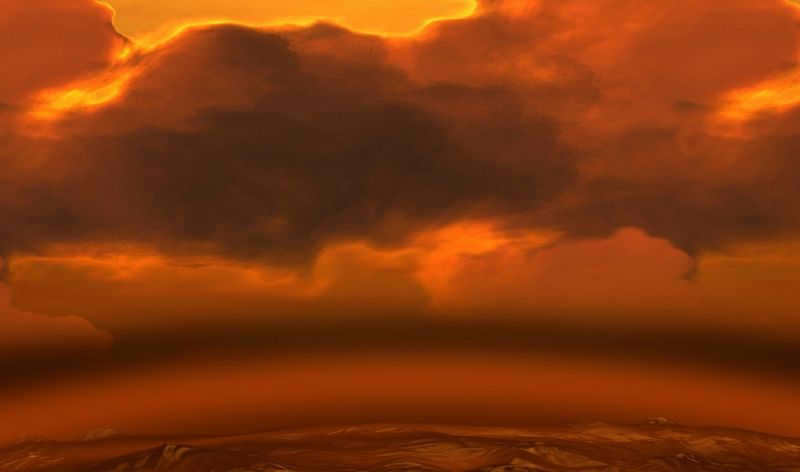
This is an approximate representation of the internal structure of the cloud layer on Venus.
Thick clouds are composed of sulfuric acid, as the atmosphere of Venus is heavily saturated with sulfur due to the activity of numerous volcanoes in the past. This cloud layer is several tens of kilometers thick and occupies the upper portion of the troposphere.
As we move from the upper boundary of the clouds towards the surface, both pressure and temperature increase dramatically. Directly below the clouds, there is a region of sulfuric acid mist. In actuality, sulfuric acid rain occurs, but at a lower altitude of approximately 25 km, the temperature reaches 200 degrees Celsius. As a result, the acid does not reach the surface but evaporates once again, creating a misty region that extends for several tens of kilometers.
There is an impenetrable shield formed by approximately 25 km of clouds and 25 km of fog below, obstructing visibility completely. Even the Sun struggles to penetrate through this shield, resulting in a strong greenhouse effect in the lower atmosphere.
At the surface, the temperature rises to 467 degrees and the pressure is 90 times higher compared to Earth. To experience the same pressure on Earth, one would have to dive underwater to a depth of 910 meters. As a result, the lower layer of Venus’ atmosphere, which is about 5 kilometers thick, is not just a gas but rather a supercritical fluid of carbon dioxide. Essentially, it exists in a transitional state between liquid and gas.
There is little temperature difference between the day and night sides of the planet, as the heated air circulates freely throughout Venus at high speeds. While the surface winds are weak due to the high density of the atmosphere, they quickly gain strength at higher altitudes. The atmosphere of Venus resembles a hurricane that moves around the entire planet. At the edges of the clouds, wind speeds can reach 100-140 m/s. It takes approximately 4 Earth days for the atmosphere to complete a full revolution around Venus.
Interestingly, lightning occurs within the sulfuric acid clouds of Venus. This phenomenon has been observed multiple times by orbital probes.
Research on Venus
The study of Venus has been challenging due to its impenetrable cloud layer. Consequently, there was limited knowledge about this planet before the launch of the first probes. It was previously believed that Venus had ideal conditions and a tropical climate, with continents and oceans teeming with extraordinary flora and fauna, all hidden beneath the clouds.
The space age has shattered these optimistic notions. Venus is now recognized as a hostile and inhospitable world. It boasts oceans of lava, perpetual darkness, sulfuric acid, and extreme heat capable of melting metal. This harsh environment would not even be suitable for demons.
Even without the greenhouse effect, the maximum temperature on Venus would only reach 80 degrees Celsius. This implies that in the middle latitudes and towards the poles, the conditions would be quite similar to those on Earth, with a comfortable temperature.
The extreme conditions on the surface pose significant challenges for the use of automated landing vehicles.
The Soviet Union made the first, albeit unsuccessful, attempt. On February 12, 1961, the “Venera-1” probe was launched, marking the first ever interplanetary flight. Unfortunately, communication was lost during the journey. This initial attempt had numerous design and communication organization errors, which were subsequently rectified. Venus-1 then became the first spacecraft to pass near the planet, albeit without guidance.
On December 15, 1970, the Venera 7 probe successfully landed on the surface of Venus and sent back temperature data for a period of 20 minutes. Unfortunately, all other equipment on board the probe failed during the descent. The previous two missions to Venus also met a similar fate, unable to withstand the extreme pressure during descent.
In 1975, the Venus 9 probe achieved a significant milestone by not only landing on Venus, but also transmitting the first black and white images from the planet’s surface. This mission lasted for 53 minutes and was able to measure wind speed and capture panoramic images. The orbital module of the probe remained in orbit and became the first man-made satellite to orbit Venus.
“In 1981, the Venus-13 spacecraft successfully landed on the surface of Venus, collecting soil samples and conducting extensive analysis. The mission also captured and transmitted 14 vivid color images, as well as 8 black-and-white images, providing valuable visual data. Additionally, the probe recorded the unique sound of the Venusian winds. Despite being initially designed to operate for only 32 minutes, the Venus-13 probe surpassed all expectations and continued its mission for an impressive 127 minutes. To this day, no other mission has been able to surpass this remarkable record.”
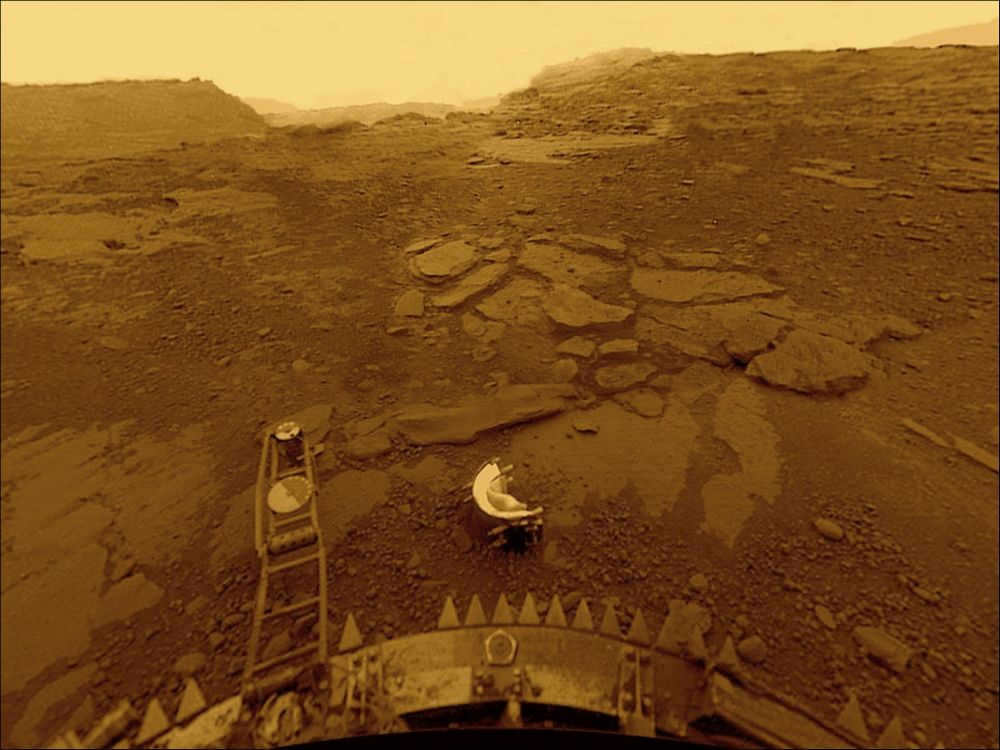
Since 1984, a number of missions have been launched to explore Venus. Most of them conducted flybys, using the planet’s gravity for acceleration. “Galileo”, “Cassini-Huygens”, and “Messenger” all utilized Venus for acceleration or as a gravitational slingshot.
In 2010, the Japanese Akatsuki spacecraft was launched and is currently in orbit around Venus, despite facing hardware difficulties and having exceeded its expected lifespan.
Among the more recent missions, the Parker Solar Probe flew by Venus on September 28, 2018, and is scheduled to make several more close passes as it orbits the Sun. The next flybys are planned for December 21, 2019 and July 6, 2020, with the possibility of additional passes near our neighboring planet.
Mercury was visited by the BepiColombo mission on October 20, 2018. This particular spacecraft is scheduled to make two flybys near Venus.
There are future plans for additional special missions, although their outcomes are currently uncertain.
Venus, the second planet from the Sun, got its name from the Roman goddess of love and beauty. Interestingly, Venus is the sole planet in our solar system that is named after a female deity. It is believed that ancient astronomers named it after the most stunning goddess in the Pantheon due to its remarkable brightness in the sky. Here, we present the current knowledge that mankind possesses about the planet Venus.
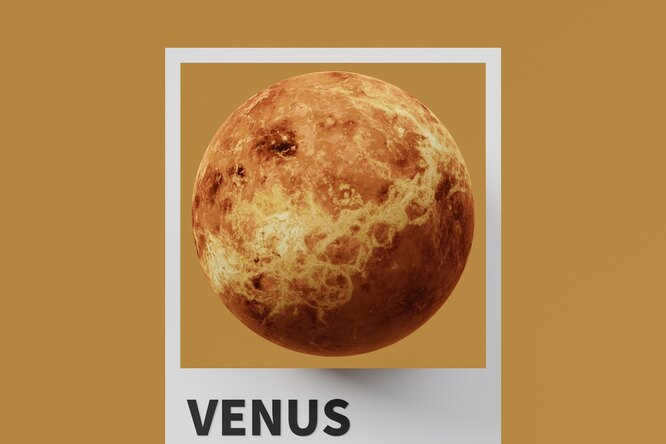
In ancient times, the evening and morning stars were often believed to be distinct entities. The Romans named them Vesper and Lucifer. As humanity advanced in space exploration, it was revealed that Venus possesses an extremely inhospitable environment, making it challenging to explore. Spaceships could not function on its surface for extended periods of time. Nonetheless, scientists have accumulated significant knowledge about this celestial body.
What occurs on Venus
Venus and Earth are frequently referred to as twins because they share similarities in terms of size, mass, density, composition, and gravity. Underneath the surface of Venus lies a metallic iron core that spans approximately 6,000 kilometers. The planet’s mantle measures about 3,000 kilometers in thickness, while its crust ranges from 10 to 20 kilometers.
Venus holds the distinction of being the hottest planet in our solar system, despite not being the closest to the Sun. This is primarily due to the perpetual greenhouse effect, which is similar to the one responsible for global warming on Earth. As a result, temperatures on Venus can soar up to 471°C – hot enough to melt lead. Spacecraft can only tolerate these extreme conditions for a limited duration of a few hours.
Aside from its high temperatures, Venus is notorious for its “infernal” atmosphere, primarily composed of carbon dioxide and featuring clouds of sulfuric acid. Consequently, the pressure on the planet’s surface exceeds that of Earth by over 90 times – akin to the pressure found 1,000 meters underwater. Despite these conditions, certain researchers, including NASA scientists, speculate that Venus may have once been capable of sustaining life. However, the surface of Venus is currently incredibly arid – the scorching rays of the sun prohibit the existence of any liquid on its surface that could support life. Approximately two-thirds of the planet’s terrain is covered in flat, smooth plains, dotted with thousands of active volcanoes.
Venus’s orbit
Venus completes a full revolution around the Sun in 225 Earth days, which is the duration of a Venusian year. This is because Venus takes 243 Earth days to rotate on its axis, making it the slowest of all the major planets. Due to its slow rotation, Venus’s metallic core cannot generate a magnetic field like Earth’s, resulting in a magnetic field that is 0.000015 times larger than Earth’s. Interestingly, if you observe Venus from above, you will notice that it rotates on its axis in the opposite direction. This means that on Venus, the Sun rises in the west and sets in the east.
We have already informed you that exploring Venus is extremely challenging due to its high temperatures. However, scientists have managed to gather a wealth of information about this planet. But how did they accomplish this?
Various space agencies, including the USSR, the US, the European Space Agency, and the Japan Aerospace Exploration Agency (JAXA), have conducted numerous missions to study Venus. In 1962, NASA’s Mariner-2 unmanned spacecraft approached Venus at a distance of 34,760 kilometers. The Soviet Union made history in 1970 by landing the first spacecraft, named “Venera-7,” on the surface of Venus. The Venera-9 station successfully captured and transmitted the first images of Venus back to Earth. In 1989, NASA launched the Magellan spacecraft, which conducted the first comprehensive radar mapping of Venus from its orbit around the planet.
During its eight-year orbit around Venus, the Venus Express spacecraft, operated by the European Space Agency, made a remarkable discovery – the presence of lightning bolts in the planet’s atmosphere. As the mission of the spacecraft was nearing its end in August 2014, the ground controllers made the decision to perform a farewell maneuver by plunging the Venus Express into the outer layers of Venus’ atmosphere for a month. Following this daring maneuver, the spacecraft then ascended to a higher orbit where it remained for several months. Unfortunately, by December 2014, the spacecraft had depleted its fuel reserves and eventually met its fiery demise as it burned up in the atmosphere of Venus.
Japanese scientists have also dispatched their spacecraft to Venus. In 2010, the Akatsuki mission was initiated, during which the spacecraft’s main engine malfunctioned as it neared the planet’s orbit. Nonetheless, Earth-based specialists managed to alter the spacecraft’s trajectory using only small engines. The spacecraft is currently still in orbit around Venus, observing the planet’s atmospheric patterns and searching for active volcanoes.
However, exploration of Venus persists to this day. In late 2019, NASA and the Space Research Institute of the Russian Academy of Sciences held discussions regarding a collaborative launch of the Venera-D mission, which would have embarked on a journey to the planet in 2029. Additionally, in 2021, NASA announced two new missions to Venus that are scheduled to commence by 2030. If you’re interested in learning more about Venus, check out this informative video on KOSMO’s YouTube channel.
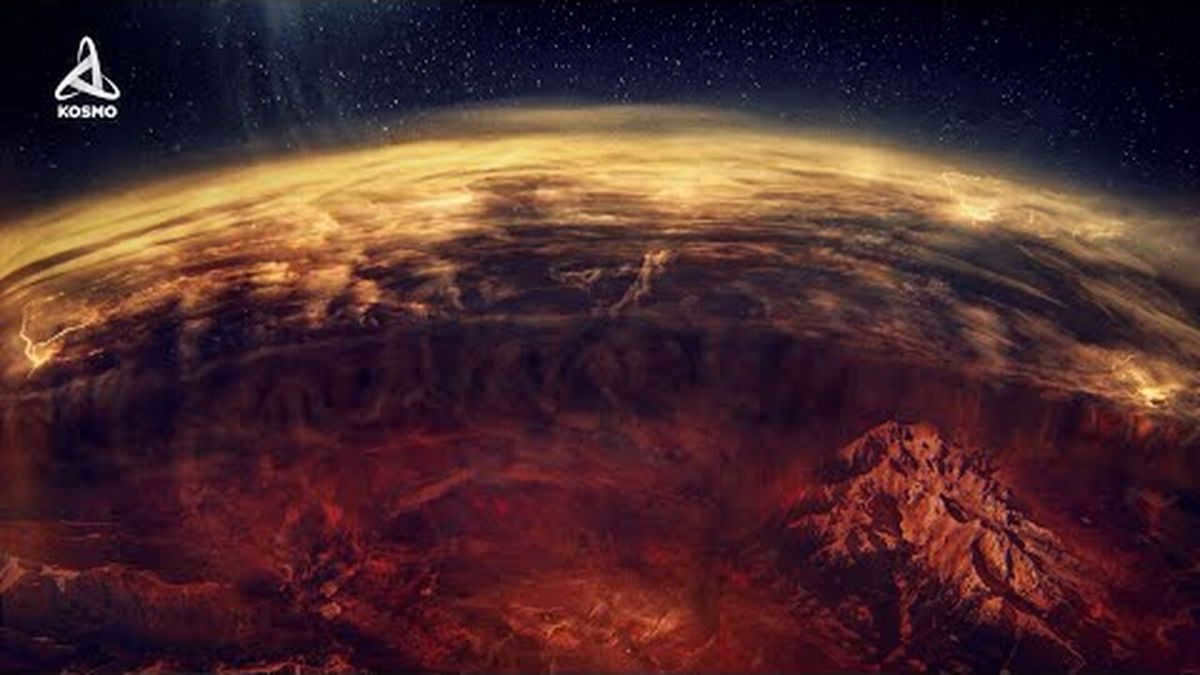
© 2007 – 2023 "Fashion Press" Ltd.
By uploading content to the Website, the User gives "Fashion Press" LLC the right to use, reproduce, distribute, create derivative works, and publicly display the content, free of charge.
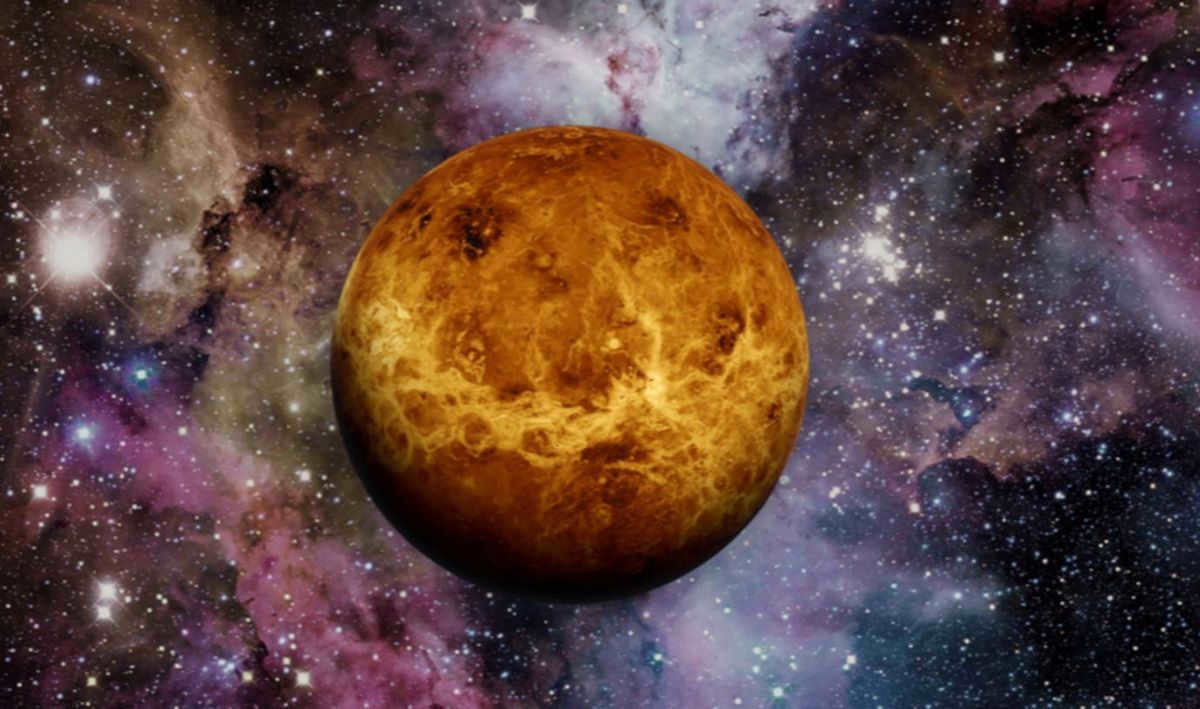
Venus is the nearest celestial body to Earth and is the second largest planet in the solar system. It is approximately 108 billion kilometers away from the Sun and around 41 million kilometers away from our planet.
Exploration and Unveiling
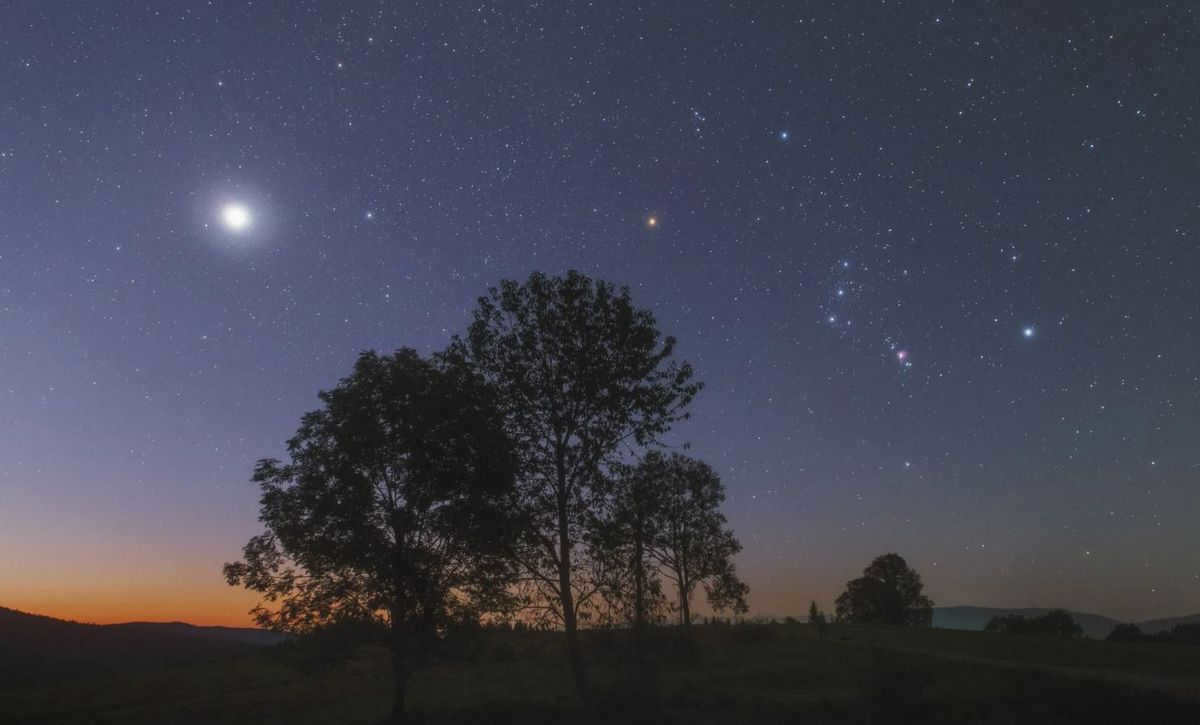
Venus is easily visible in the sky due to its bright glow. Mayan astronomers made detailed observations of the planet prior to the time of Christ. In various ancient cultures, Venus was mistaken for two separate stars, each with its own name. The most commonly used names were the Morning Star and the Evening Star. The ancient Greeks referred to the Morning Star as Phosphorus and the Evening Star as Eosphorus.
In Russian, Phosphorus translates to “bearing light” and Eosphorus translates to “evening star”. The Romans named the stars Lucifer, meaning “bearing light”, and Vesper, meaning “evening”. Pythagoras later proved that the two stars were actually a single celestial body, leading to the planet being given the name Venus.
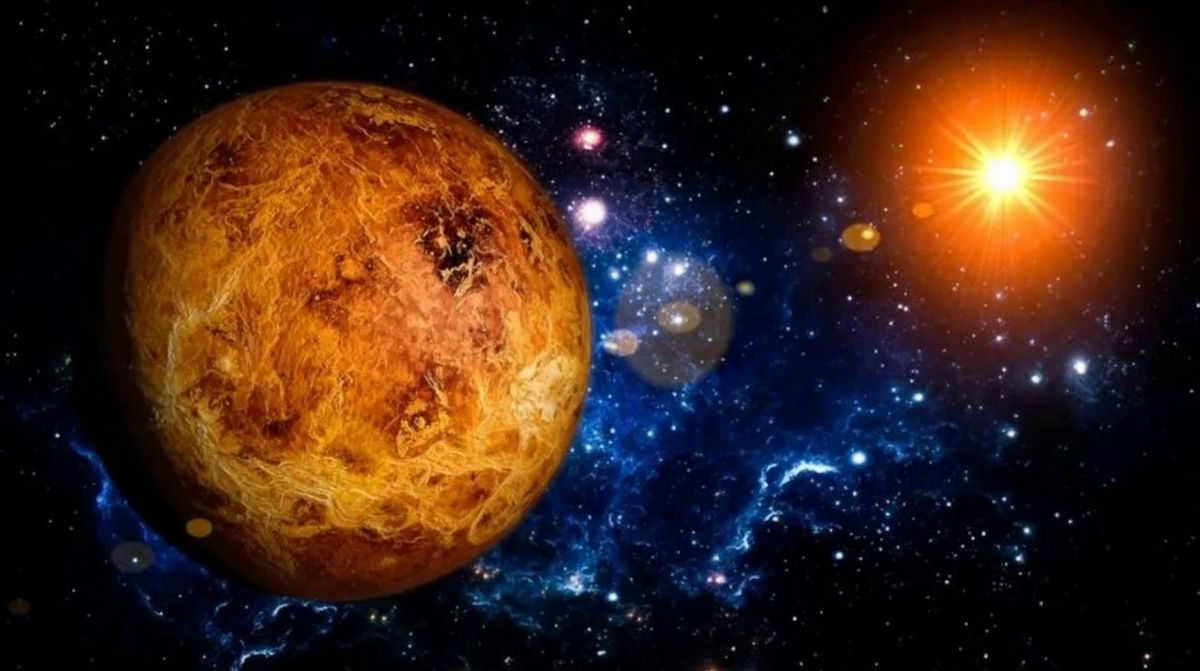
In ancient Greece, the planet known as Aphrodite, in Babylon it was called Dilbat, while the Maya referred to it as Shush Ek, which translates to “wasp star”. The Chinese had their own name for Venus, calling it the great white star. In ancient Russia, the planet had multiple names including Zornitsa, Zaryanka, Wolf Star, and others.
The current name of the planet was officially established during the New Age due to:
Distinctive Features
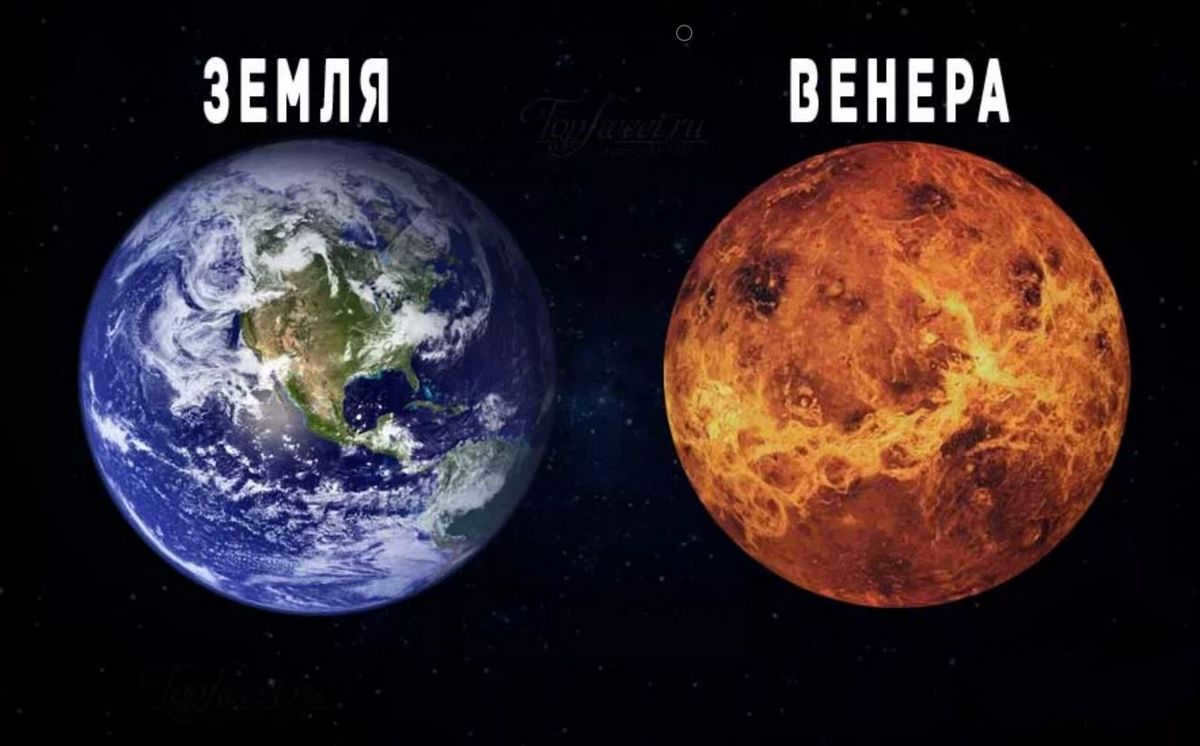
Venus and Earth share similarities in terms of mass, size, and density. It is believed that both planets were formed from the same type of rocky building blocks, making them twins in a sense. Venus has a mass of 4.87 × 1024 kilograms, which is about 81.5% of Earth’s mass. In terms of size and mass, Venus ranks as the sixth planet in our solar system.
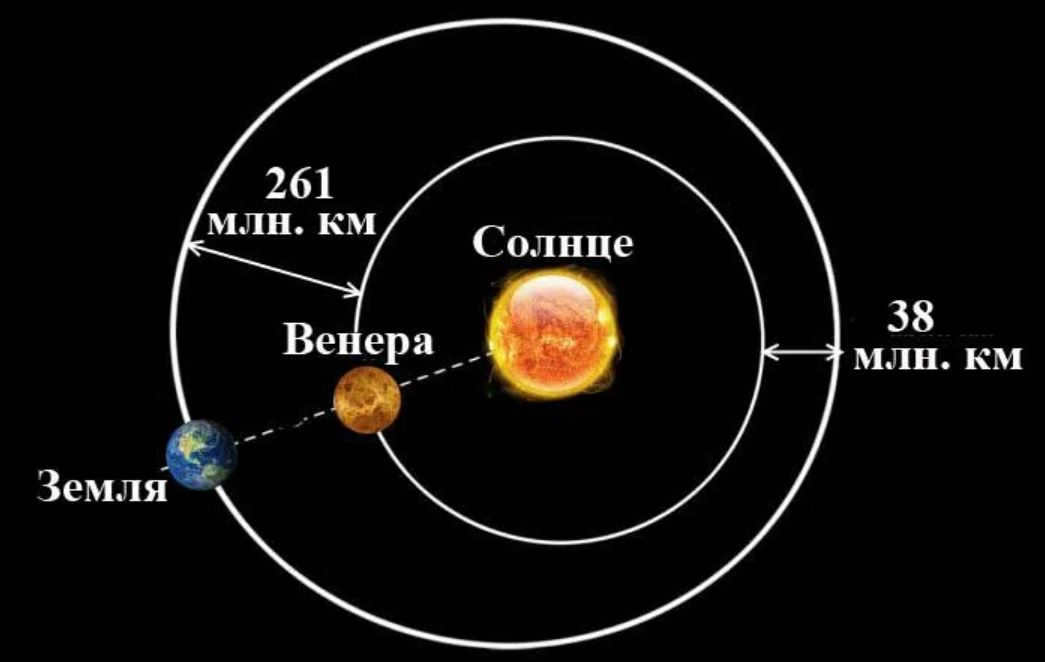
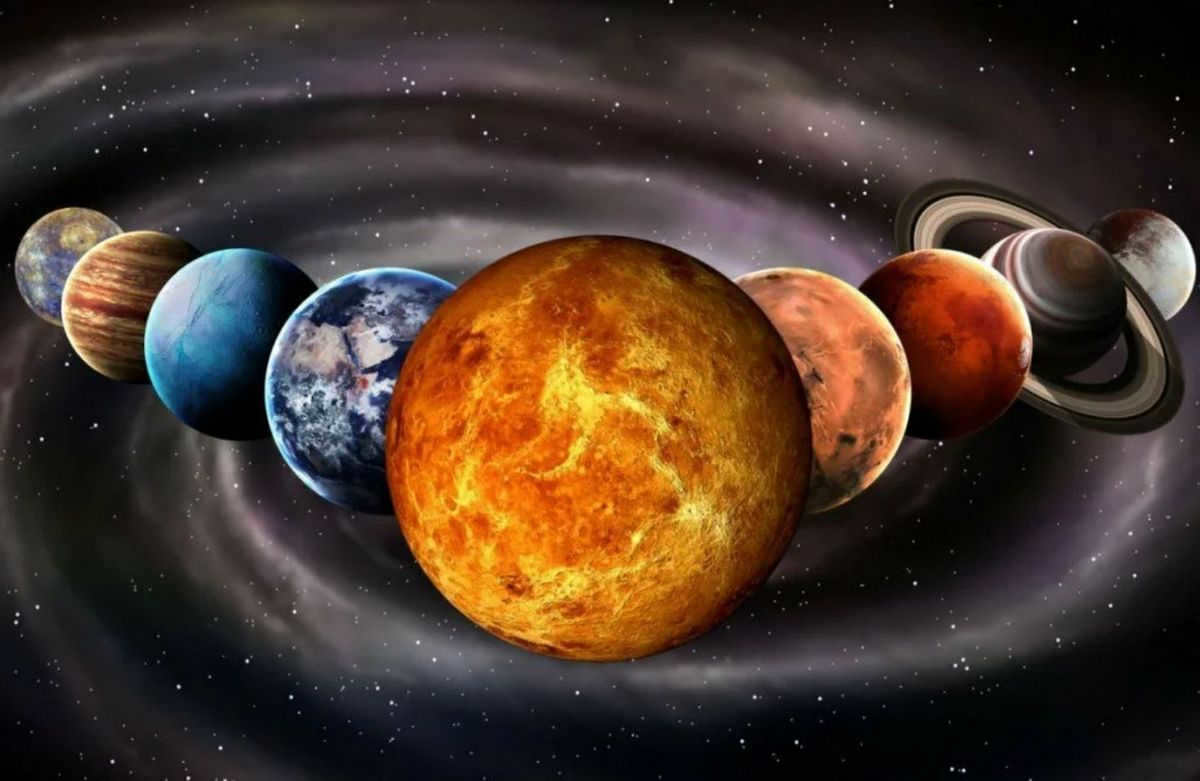
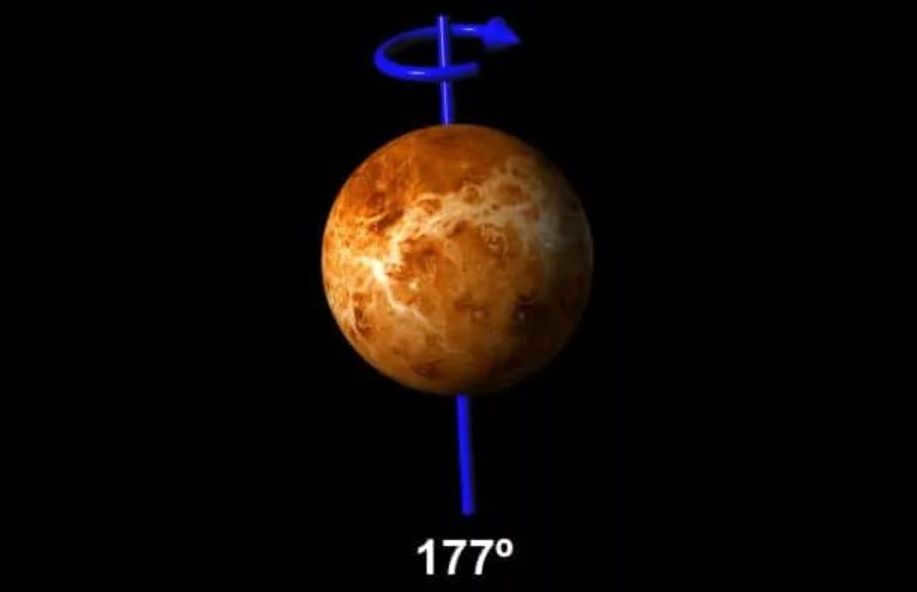
When the planet rotates around its axis, it completes a full circle in 116.75 Earth days. With a density of 5.24 g/cm3, Venus is denser than Earth. The average radius of Venus measures 6,051.8 kilometers. Compared to Earth, the atmosphere of Venus is 92 times denser. The composition of the atmosphere consists of carbon dioxide (96%), molecular nitrogen (3.5%), and water (0.02%).
In addition to these main gases, there are also other gases present in small amounts, such as carbon monoxide, molecular oxygen, sulfur dioxide, and hydrogen chloride. Interestingly, Venus clouds emit a distinct odor that resembles the smell of rotten eggs.
Characteristics
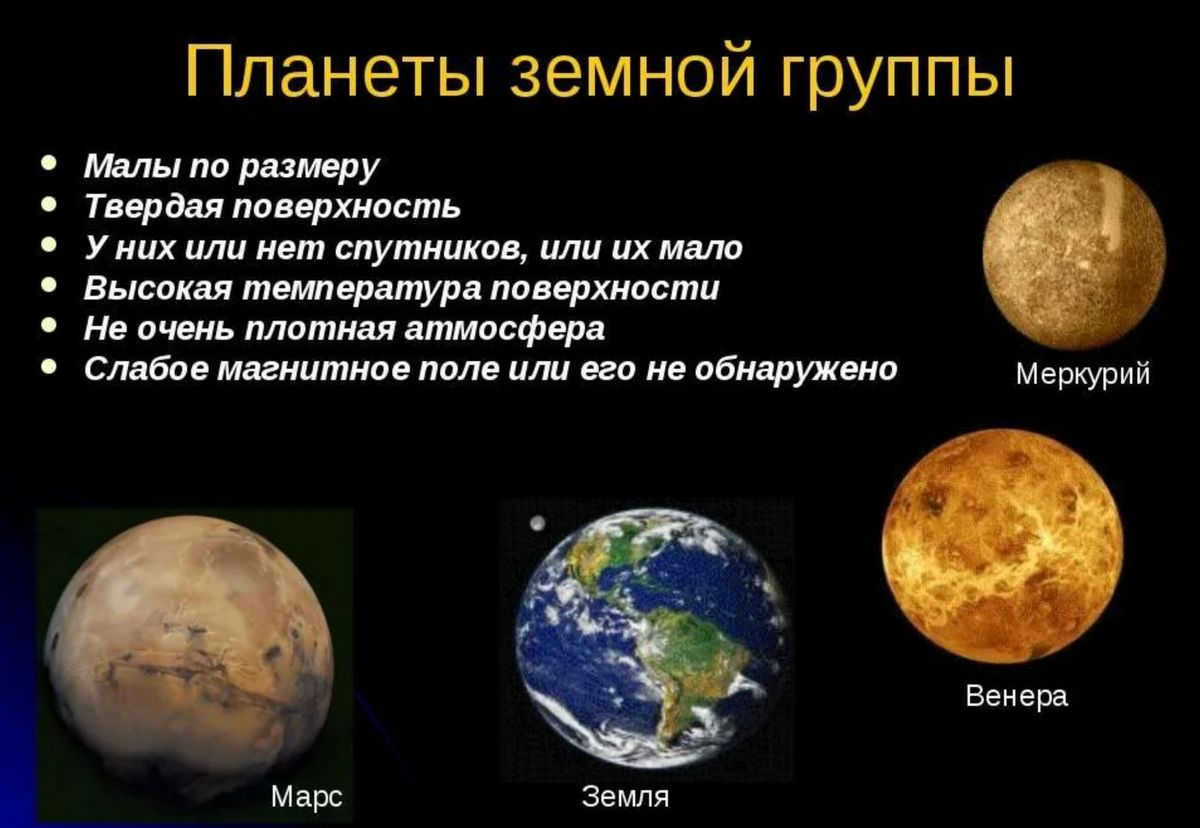
Venus is classified as a terrestrial planet, along with Earth, Mars, and Mercury. It holds the distinction of being the hottest planet in the solar system, with an average temperature of 737 K or 464°C. Scientists posit that Venus possesses a similar internal structure to Earth, with a crust estimated to be 50 kilometers thick.
Unlike Earth, Venus lacks its own geomagnetic field. Its surface exhibits a red hue and is marked by faults, volcanoes, and mountains. Vast plateaus and volcanic plains can also be found on the planet. Scientists estimate the average age of Venus’ surface to be around one billion years, yet they have yet to uncover the reason for the planet’s surface renewal.
Some scientists suggest that the geological formations on Venus were caused by volcanic eruptions, which resulted in the melting of the surface and the subsequent overlapping of tectonic activity. However, skeptics of this hypothesis point out that there is a scarcity of craters on Venus’ surface, raising doubts about the volcanic origin. The largest known crater on Venus is called Mir, boasting a diameter of 280 kilometers.
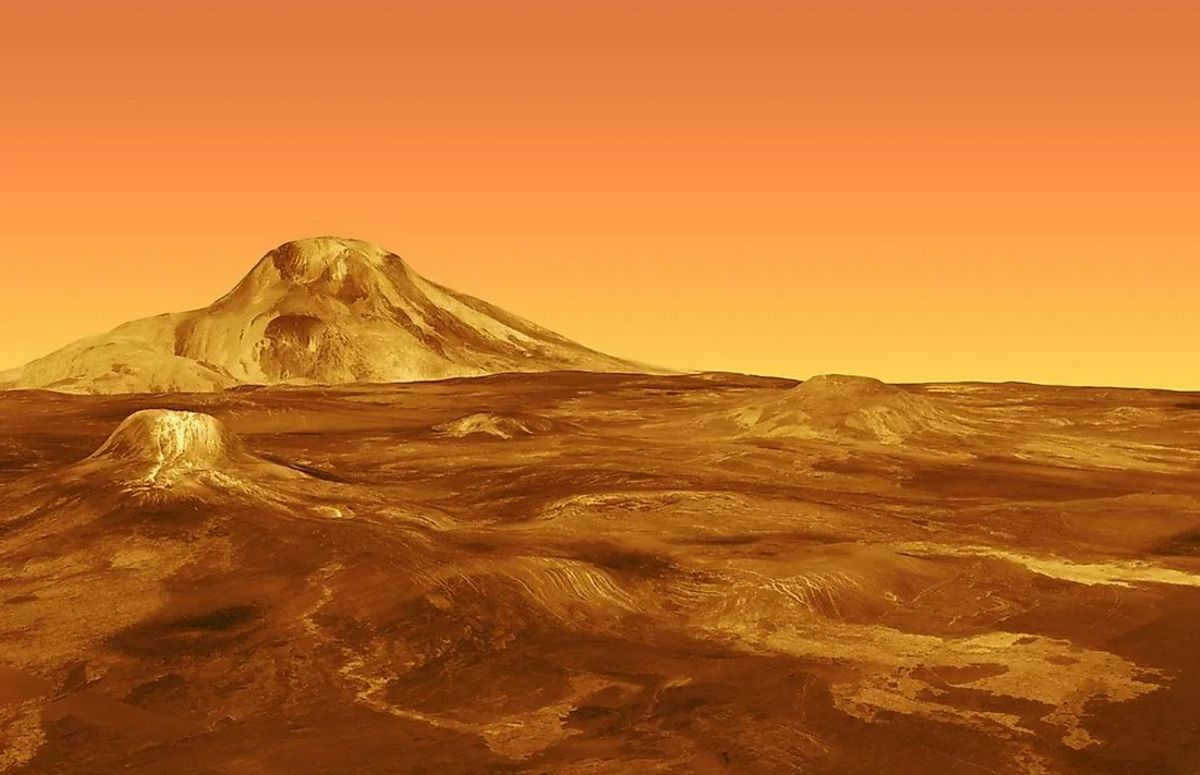
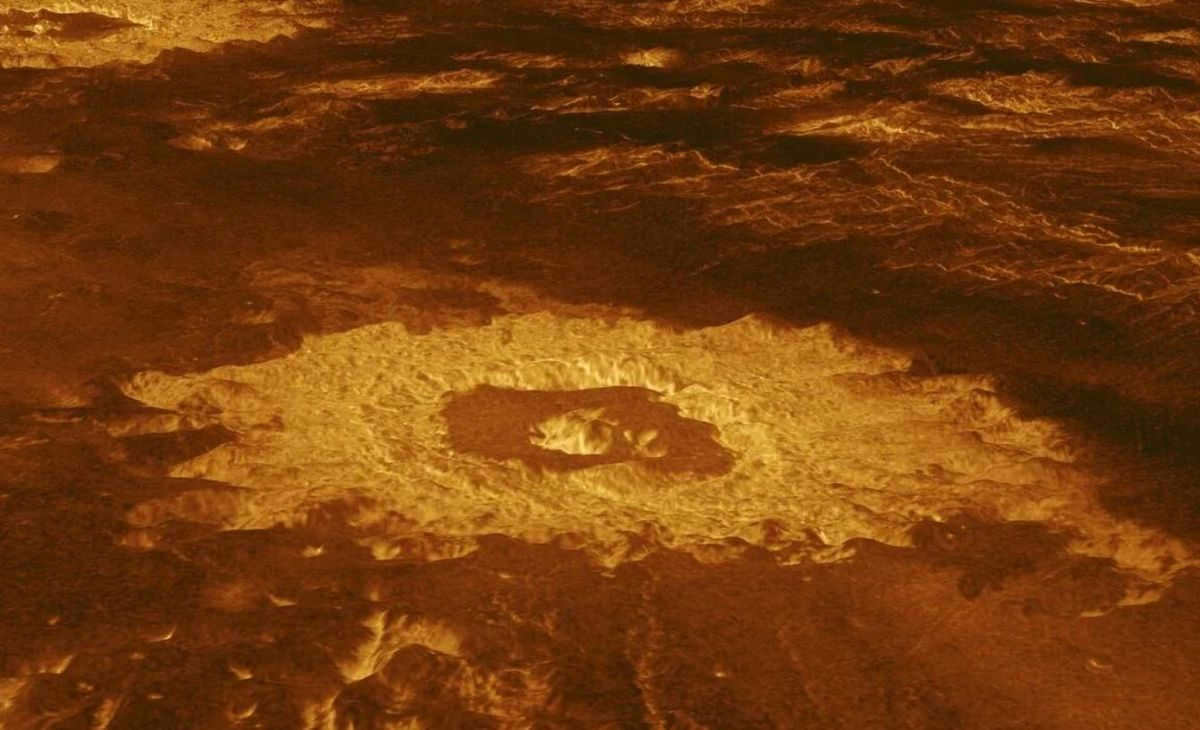
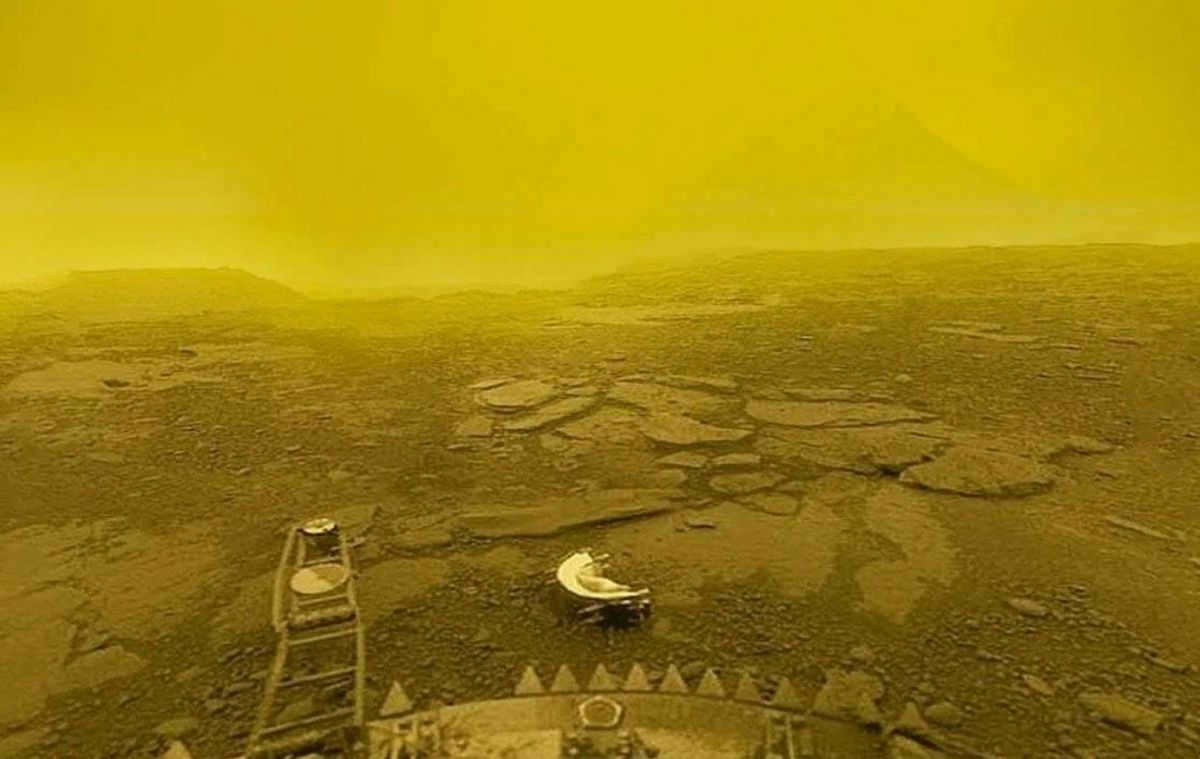
The density of the atmosphere on Venus is so great that the Sun appears as a mere speck of light when seen through it. The air pressure on the planet is a staggering 92 times higher than that on Earth. Any surface water on Venus exists solely in the form of vapor. Experts posit that in the past, Venus was cooler and its water was in a liquid state. The planet’s gradual heating process began billions of years ago.
Due to the greenhouse effect, Venus is completely inhospitable in the conventional sense.
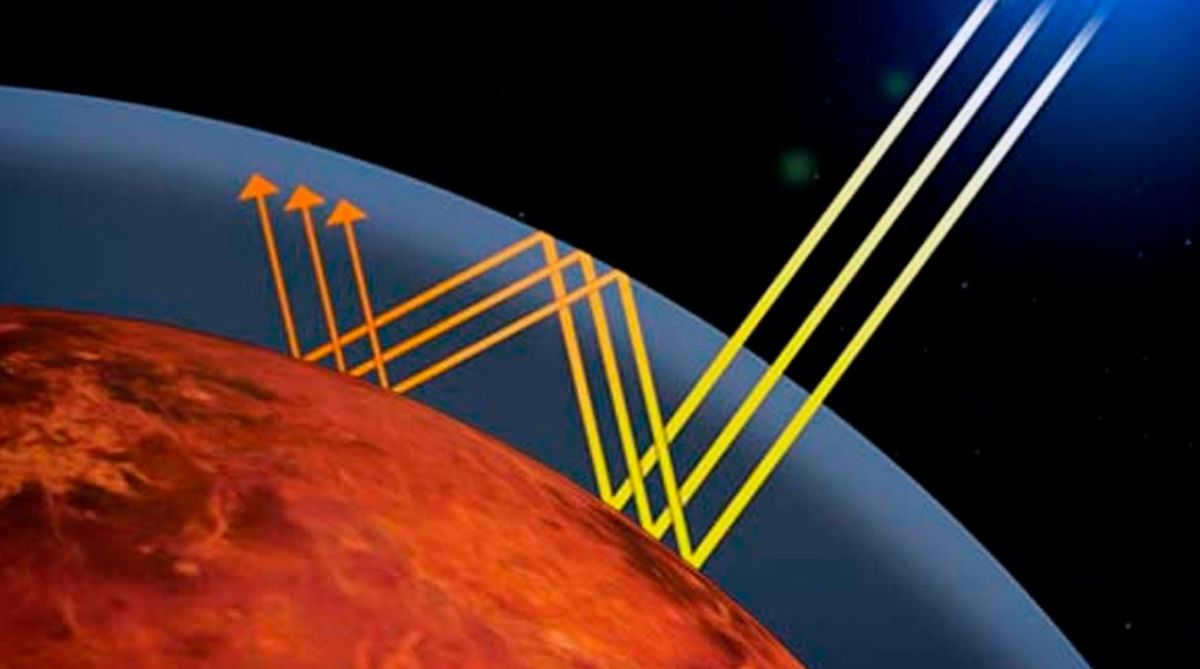
It has been observed that the atmosphere at an altitude of 50 km on Venus maintains an atmospheric temperature ranging from 30-70°C, which is considered suitable for sustaining life. Recent exploratory missions to the planet have detected the presence of bacteria in the lower layers of its atmosphere. Additionally, the clouds of Venus have shown the presence of phosphine, which serves as an indicator of microbial life.
Fascinating information
- On Venus, winds traverse the atmosphere, but they never make contact with its surface. These winds can reach speeds of up to 85 m/s and complete a full orbit around the planet in 4-5 days.
- In 1966, the USSR achieved the remarkable feat of landing a space probe on Venus, marking the first successful landing on the planet. This achievement led to Venus being commonly referred to as the “Russian planet.”
- In the solar system, only the moon shines brighter than Venus. The planet is visible in the sky even without the aid of a telescope, even on a clear day.
- The atmospheric clouds on Venus are composed of sulfuric acid vapor, which can give rise to lightning. Acid rain is the only form of precipitation that occurs on Venus.
Hot Planet Venus: Watch the Video
FAQs
Is Venus accompanied by any satellites? Although Venus does not have any natural satellites, it does have a quasi-satellite known as 2002 VE68, which orbits near Earth. This status was granted to it in 2005.
When is the best time to observe Venus? Venus is most visible during the summer solstice and least visible during winter.
How long did it take for the Venus Express spacecraft to reach Venus? Launched in 2002, the Venus Express spacecraft took approximately 153 days to reach its destination, the planet Venus.
How many volcanoes are there on Venus? There are a total of 167 volcanoes on Venus, all of which are currently inactive.
Is there a chance of finding extraterrestrial life in the vastness of the universe? Scientists often feel the immense solitude of humanity when researching the vastness of the universe, similar to the themes explored in Efremov’s novels. However, the chances of finding life similar to our own in outer space are currently very slim.
Was Venus once considered a potential habitat for organic life? For a long time, Venus was considered as a possible home for organic life. This planet, shrouded in both legend and mystery, has captivated the imaginations of many.
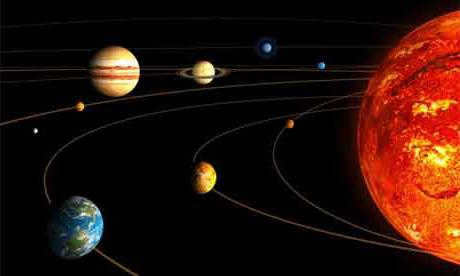
Close and alike
Venus comes after Mercury when it comes to its distance from the sun and it is our closest neighbor. It can be observed from Earth without the need for a telescope: during the evening and early morning hours, Venus is the brightest object in the sky after the Moon and the Sun. To the average observer, the planet always appears white in color.

In literature, you may come across its classification as the Earth’s twin. Several explanations exist for this: the description of Venus in many aspects closely resembles that of our home planet. Firstly, this includes the diameter (approximately 12,100 km), which is nearly identical to that of the Blue Planet (with a difference of about 5%). The mass of the celestial body, named after the goddess of love, also differs insignificantly from that of Earth. The close proximity has also played a role in this partial similarity.
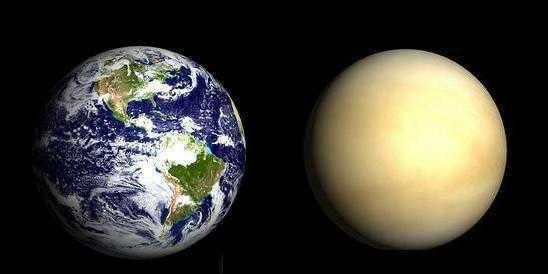
The detection of the atmosphere bolstered the belief in the resemblance of the two celestial bodies. Information concerning Venus, which validated the existence of a distinct air envelope, was acquired by M.V. Lomonosov in 1761. The brilliant scientist observed the transit of the planet across the Sun’s disc and noticed a peculiar radiance. The occurrence was explained by the bending of light rays in the atmosphere. Nevertheless, subsequent findings unveiled a vast disparity between the ostensibly analogous circumstances on the two planets.
A puzzle wrapped in secrecy
Indications of similarities such as the size of the planet Venus and the existence of an atmosphere were accompanied by findings on the makeup of the air, effectively shattering hopes of life on the Morning Star. During the course of space investigation, carbon dioxide and nitrogen were discovered. They constitute approximately 96% and 3% respectively of the atmospheric envelope.
The density of the atmosphere is the element that renders Venus so prominently visible from Earth, while also rendering it unattainable for exploration. The layers of clouds enveloping the planet reflect light effectively, yet remain impenetrable to researchers seeking to unveil their secrets. Only with the advent of space exploration did more comprehensive knowledge about the planet Venus become accessible.
Perpetual Heat
The climate on Venus resembles the extraordinary depictions of conditions in the underworld. The planet’s atmosphere prevents the surface from ever becoming cold, even on the side facing away from the Sun. This is remarkable considering that Venus completes a full rotation on its axis in over 243 Earth days! The temperature on Venus reaches a scorching +470ºC.
The absence of seasonal variations can be attributed to the planet’s axial tilt, which is estimated to be no more than 40 or 10º depending on different sources. Additionally, the thermometer readings are consistent across both the equatorial zone and the polar regions.
Understanding the Greenhouse Effect
Extreme conditions on Venus have eradicated any possibility of water on the planet. Scientists believe that in the past, Venus had oceans, but the drastic increase in temperature has made it impossible for them to survive. Interestingly, the greenhouse effect on Venus was actually caused by the evaporation of large quantities of water. The water vapor allowed sunlight to enter the atmosphere, but it also trapped heat at the planet’s surface, leading to a rise in temperature.
Topography
Heat has played a crucial role in shaping the landscape of Venus. Before the introduction of radar techniques in astronomy, scientists were unable to observe the surface characteristics of the planet. However, thanks to photographs and images captured by spacecraft, a relatively comprehensive topographic map of Venus has been created.
The planet’s crust has been thinned by high temperatures, resulting in a plethora of volcanoes, both active and dormant. These volcanoes contribute to Venus’ rugged appearance, as seen in radar images. Extensive plains have formed from the flow of basaltic lava, with elevated regions spanning tens of square kilometers. These elevated regions, known as continents, are similar in size to Australia and resemble the mountain ranges of Tibet. Their surface is characterized by fractures and craters, in stark contrast to the relatively smooth landscape of certain parts of the plains.
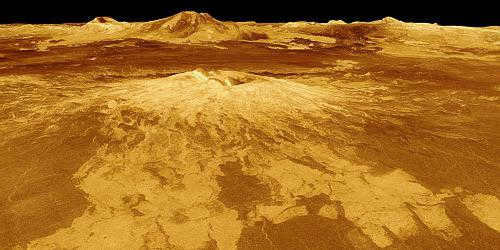
The size of craters caused by meteorites is significantly smaller in this location compared to the Moon, for instance. There are two potential explanations for this phenomenon, according to scientists: the presence of a dense atmosphere acting as a protective shield, and active processes that have obliterated the evidence of celestial bodies’ impact. In the former scenario, it is likely that the identified craters formed during a period when the atmosphere was less dense.
Desert
If we only focus on radar data, the description of the planet Venus would be incomplete. Although radar data provides an understanding of the planet’s relief, it is difficult for the average person to imagine what they would see if they were on the planet’s surface. However, studies of spacecraft that have landed on Venus have shed some light on this question. These studies have revealed that the planet’s color would predominantly be shades of orange and gray, resembling a barren desert. Venus is a waterless and scorching hot planet, much like a desert. The unique coloring of the planet’s surface dominates its sky as well, which is attributed to the absorption of the short-wave part of the light spectrum by its dense atmosphere.
Challenges in the pursuit of education
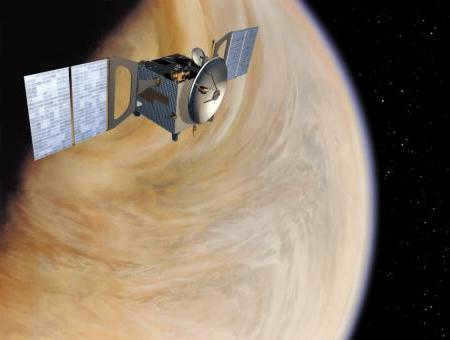
Gathering data from Venus is an arduous task for spacecraft. The planet’s harsh winds make it challenging to explore its surface, with wind speeds peaking at 50 km above ground level. While the winds calm near the surface, even the slightest air movement presents a significant obstacle in Venus’ dense atmosphere. Ships equipped with cameras can capture photographs of the planet’s surface, but their limited endurance against the hostile conditions only allows for a few hours of exploration. Despite these challenges, each expedition yields new discoveries for scientists to uncover.
“The peculiarities of Venus.”
Venusian wind is the cause of the fast movement of clouds around the planet, which is much faster than its rotation around its axis, which takes 243 days. However, the atmosphere is carried around the planet in just four days. But the oddities of Venus don’t stop there.
The length of a year on Venus is slightly shorter than its day, at 225 Earth days. This means that the Sun rises in the west on the planet, rather than in the east. This unique direction of rotation is only seen on Uranus. Venus’s faster rotation around the Sun compared to Earth allows for the observation of Venus twice a day: in the morning and evening.
The planet’s orbit is almost a perfect circle, as is its shape. Unlike Earth, which is slightly flattened at the poles, Venus does not have this peculiarity.
Coloring Pages
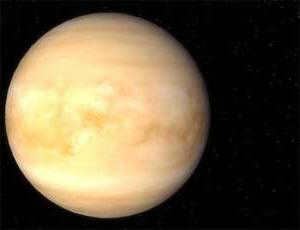
The color of the planet Venus is a subject that has already been partially discussed, but it is not entirely clear. Venus has certain characteristics that contribute to its color. When observed from space, the planet appears different from the dusty orange color on its surface. This is due to its atmosphere: the cloud cover prevents the passage of blue-green spectrum rays, giving the planet a dirty white color when viewed from afar. However, for observers on Earth, Venus has a cool glow instead of a reddish hue when it rises above the horizon, earning it the nickname “Morning Star”.
Organization
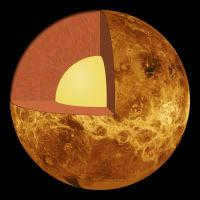
Thanks to numerous spacecraft missions, scientists have been able to not only determine the color of Venus’s surface but also gain a deeper understanding of its internal structure. Similar to Earth, Venus has a crust that is approximately 16 km thick, a mantle, and a core. However, the proportions of these layers differ from Earth’s. The mantle of Venus is over three thousand kilometers thick and consists primarily of various silicon compounds. Surrounding the mantle is a relatively small core, composed mostly of liquid iron. While not as massive as Earth’s core, Venus’s core still accounts for about a quarter of the planet’s total mass.
Venus lacks its own magnetic field due to the unique characteristics of its core. Consequently, the planet is vulnerable to the solar wind and does not have protection against the hot flux anomaly, which refers to frequent and immensely powerful explosions that have the potential to engulf the Morning Star, as suggested by scientists.
Exploration of the Earth
Scientists are currently investigating various characteristics of Venus, such as its planet color, greenhouse effect, and magma movement, in order to gather data that can be applied to our own planet. By analyzing the structure of Venus’ surface, which is the second closest planet to the Sun, researchers hope to gain insight into what Earth may have looked like approximately 4 billion years ago.
The analysis of atmospheric gases on Venus provides valuable information about its early formation and is used to develop theories about the evolution of our own planet, known as the Blue Planet.
Some scientists speculate that the extreme heat and lack of water on Venus could potentially resemble a future scenario for Earth.
The artificial cultivation of life
In relation to the forecasts of Earth’s impending doom, there are initiatives to replenish other planets with organic life. One potential candidate is Venus. The ambitious proposal involves dispersing blue-green algae in the atmosphere and on the planet’s surface, as it plays a central role in the theory of life’s origins on our own planet. The introduction of these microorganisms could theoretically significantly reduce carbon dioxide levels and alleviate planetary pressure, paving the way for further colonization. The only insurmountable hurdle in implementing this plan is the absence of water, which is crucial for the thriving of algae.
There are also certain expectations surrounding particular mold species, although all progress in this field thus far remains purely theoretical, as they inevitably encounter significant challenges.

